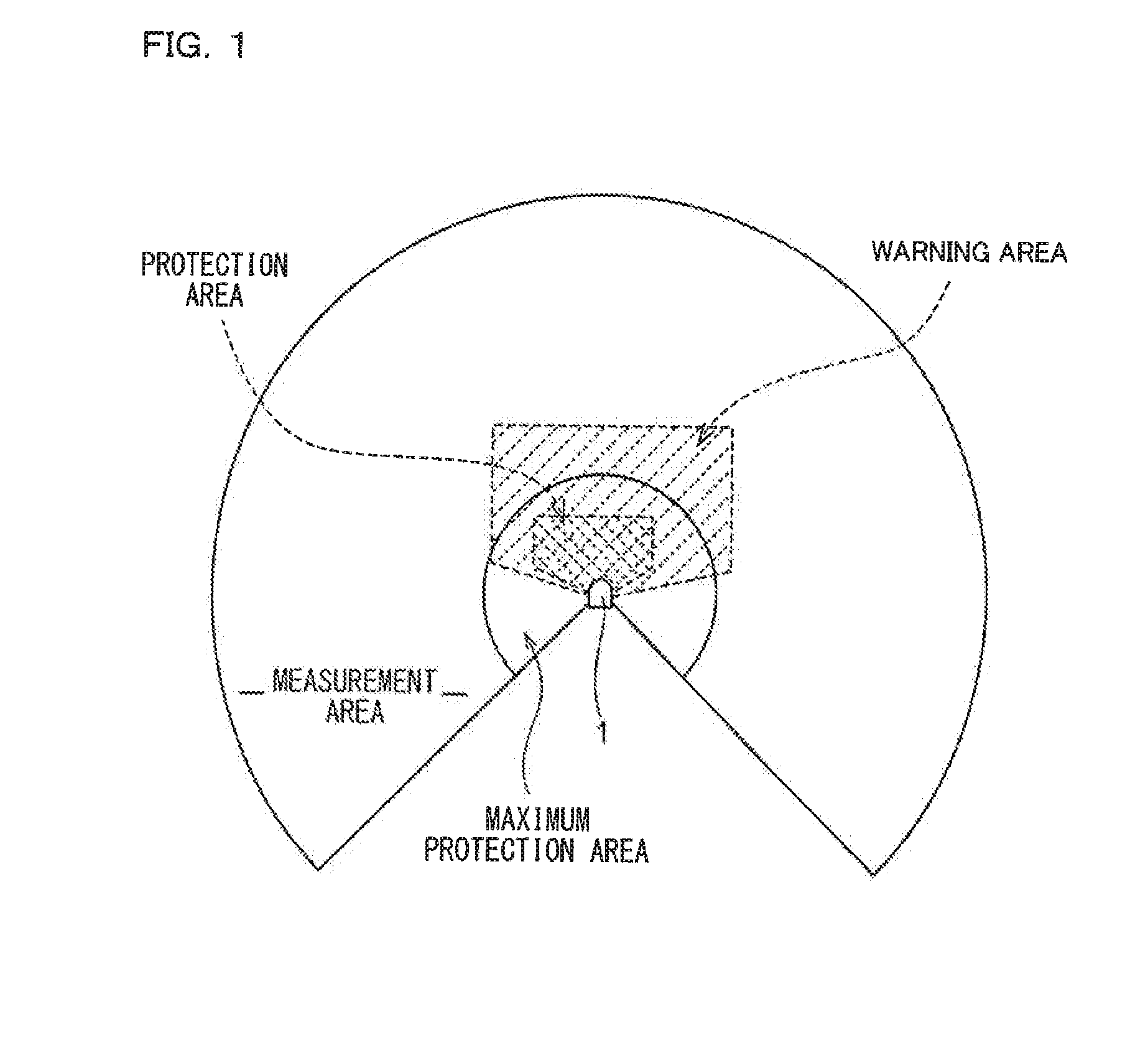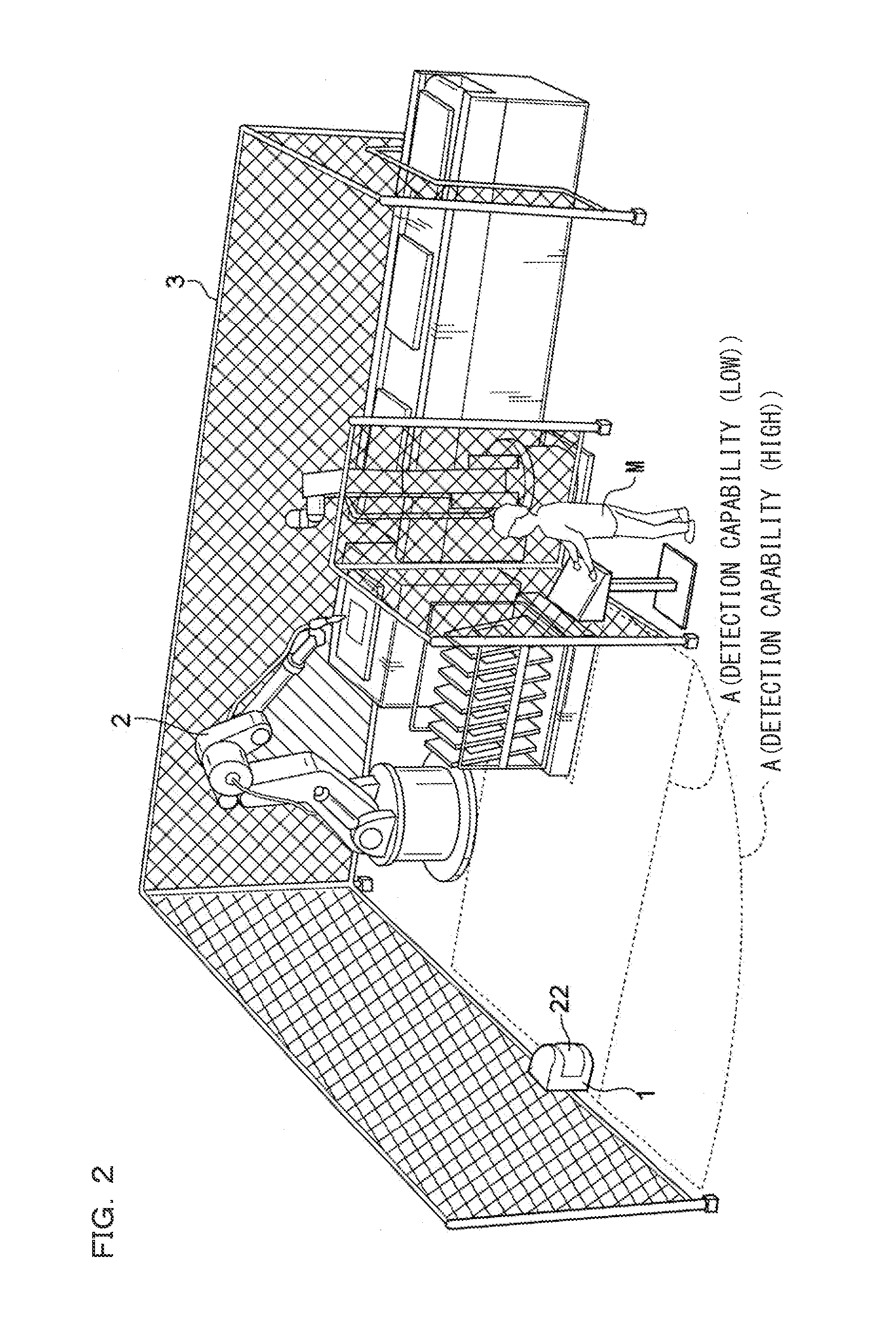Safety Photoelectric Switch
a photoelectric switch and safety technology, applied in the direction of electronic switching, pulse technique, instruments, etc., can solve the problem of a new photoelectric switch appearing, and achieve the effect of suppressing the influence of the change on the detection sensitivity
- Summary
- Abstract
- Description
- Claims
- Application Information
AI Technical Summary
Benefits of technology
Problems solved by technology
Method used
Image
Examples
examples
[0068]With reference to FIG. 1, as generalities, basic terms of an optical scanning type photoelectric switch: “measurement area”; “maximum protection area”; “warning area”; and “protection area”, are described. The “maximum protection area” means a region where objects having a variety of reflection factors from a low reflection factor object to a high reflection factor object, which are stipulated by the safety standard, are detectable by the optical scanning type photoelectric switch. The “measurement area” means a region where an object having a standard reflection factor is detectable by the optical scanning type photoelectric switch, and this “measurement area” completely includes the “maximum protection area”.
[0069]As is known, the optical scanning type photoelectric switch is used to two-dimensionally scan the maximum protection area with light such as laser light and monitor scanning light reflected from the maximum protection area, thereby to monitor safety inside the area...
PUM
| Property | Measurement | Unit |
|---|---|---|
| radial distance | aaaaa | aaaaa |
| scan angle | aaaaa | aaaaa |
| angle | aaaaa | aaaaa |
Abstract
Description
Claims
Application Information
 Login to View More
Login to View More - R&D
- Intellectual Property
- Life Sciences
- Materials
- Tech Scout
- Unparalleled Data Quality
- Higher Quality Content
- 60% Fewer Hallucinations
Browse by: Latest US Patents, China's latest patents, Technical Efficacy Thesaurus, Application Domain, Technology Topic, Popular Technical Reports.
© 2025 PatSnap. All rights reserved.Legal|Privacy policy|Modern Slavery Act Transparency Statement|Sitemap|About US| Contact US: help@patsnap.com



